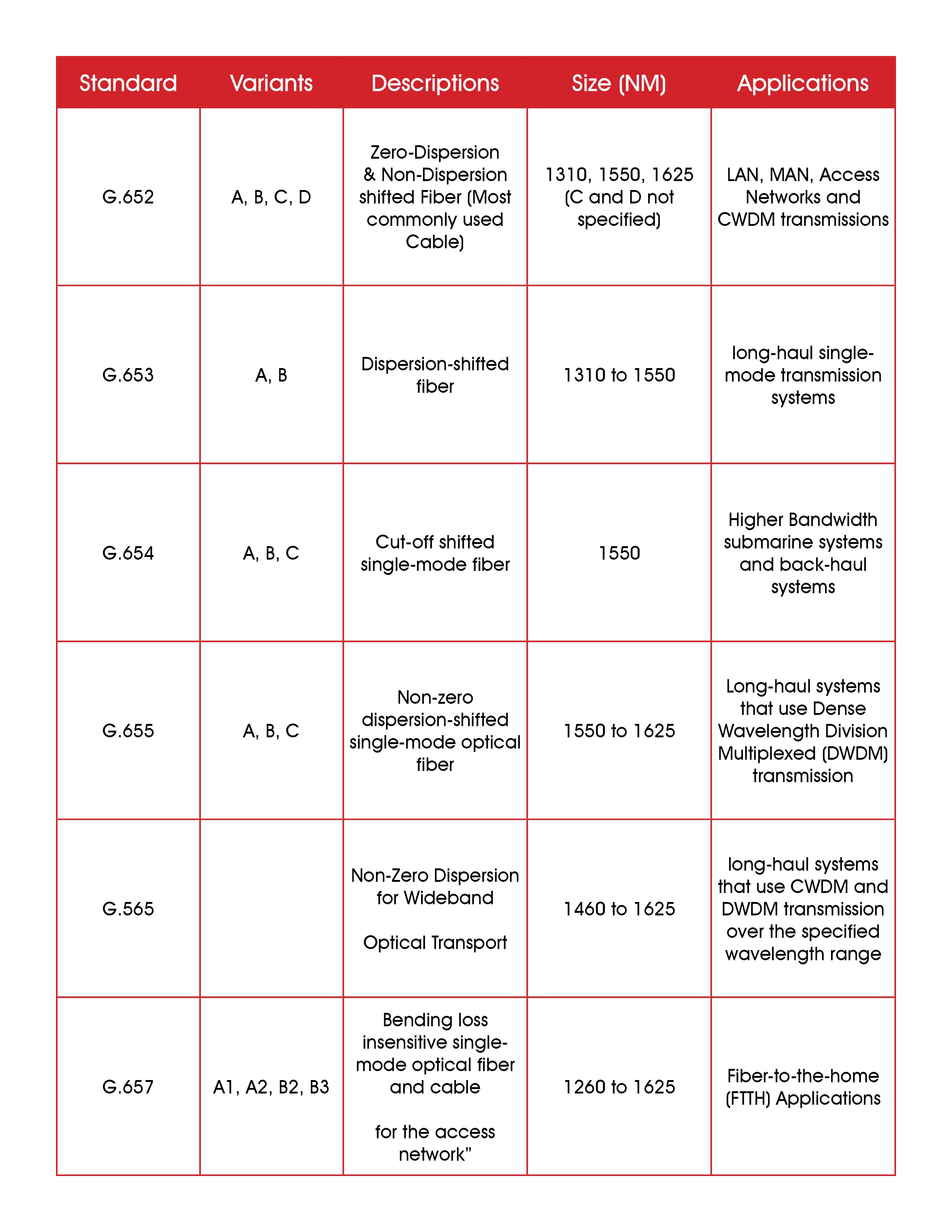Getting to Know Single-Mode Fiber
Single-mode fiber cable is the most widely used fiber cable for back-haul infrastructure applications. It's characteristics, such as low attenuation, resistance to dispersion, high bandwidth, and long-distance capabilities make it an excellent choice for communications.
Single-Mode Fiber
Single-Mode Fiber (SMF) gets its name from the single path or mode available for lightwave transmissions. It consists of four main components - the core, cladding, buffer, and jacket. The core is between five and 10.5 microns in diameter and made from ultrafine silica or glass. The cladding or outer core is approximately 125 microns in diameter and also made up of fine silica. The buffer protects the core and cladding components, and the jacket protects all elements of the cable.
Optical Transmissions
Data transmission through fiber cable is a miraculous process. It requires the modulation of data (i.e; an email) and converts the digital information into an electrical signal. That electrical signal is sent to the egress port of the networking hardware, at which point, the electrical signal is modulated into lightwaves. Transmitters take the lightwaves and through pulsation transmit the once converted data signals into ultrafine silica or glass.
On the receiving end, another transmitter demodulates the light waves back into an electrical signal, which in turn gets processed through the networking hardware where the data is forwarded.
These converted electrical signals can be transmitted at different wavelengths. Today's most popular wavelengths for single-mode fiber are 1310nm, 1550nm, and 1610nm.
However, due to the high cost of the varying wavelength transmissions, power requirements, and specialty lasers needed, the transmitters and receivers are relatively more expensive than those of multi-mode fiber, making the installation of single-mode fiber expensive.
Signal Loss
Light signals are extremely sensitive to interference from internal and external influences. One internal influence is dispersion, specifically, Modal Dispersion (MD). A major advantage of SMF is the avoidance of MD. MD is caused by the inaccuracies in light signaling due to light waves taking different pathways through the cable and arriving at the output destination at different times. These inaccuracies reduce the amount of data that can be transmitted over the cable.
Since single-mode only has one pathway for light to travel through, transmissions are not impacted by the inaccuracies of MD. Without these limitations, single-mode is able to transmit longer light waves through cables. However, SMF is susceptible to a different form of dispersion - Chromatic Dispersion (CD). CD is the spreading of light rays caused by different speeds at which wavelengths travel and arrive as its distention. It is similar to MD, although CD involves the rays of light rather than the light signal itself.
Attenuation is the dimming of light or loss of light strength due to absorption and scattering. In SMF, attenuation is much lower due to its one mode of transmission and longer wavelengths. Absorption can be caused by "High Water Peak" frequencies, where minute amounts of water vapor, introduced by the environment or during the manufacturing process, interfere with the glass. Scattering is caused when light reflects off small impurities in the glass.
Standards
The International Telecommunication Union-Telecommunications (ITU-T) and International Electrotechnical Commission (IEC) are the governing bodies that set the standards for telecommunications. They have identified six different fiber types each with its own variants, bringing the total to 19 different single-mode fiber types. See Table Below.
Expansion Made Easy
Expanding existing fiber networks inside of industrial environments can be an arduous process. The proposition can be expensive, time-consuming, or limited by the available strands ready for use. In situations where network expansion is not possible, single fiber strands using Wavelength-Division Multiplexing (WDM) technology may be the best answer.
Single strand fiber allows for the use of existing pairs of fiber strands as individual cables, essentially multiplying bandwidth capacity. This process is done through bidirectional (BiDi) transmissions where light signals are sent in opposing directions over different wavelengths.
The Light Within the Light
WDM technology is centered around multiple wavelengths being transmitted simultaneously over the same fiber pair. The simultaneous wavelengths allow multiple streams of data to occur at the same time. The two most common WDM technologies are Coarse (CWDM) and Dense (DWDM). CWDM technology creates a small number of channels with large spacing between channels, whereas DWDM technology creates more channels with less spacing between channels.
Antaira Technologies specializes in fiber communications. Our industrial switches (managed and unmanaged Ethernet) have various fiber options for every application. The large selection of SFP modules secure end-to-end connectivity with existing or newly installed fiber cables.
If you have any questions or need assistance in deciding on how you can optimize your fiber network, our sales engineers and design team are more than willing to help.
